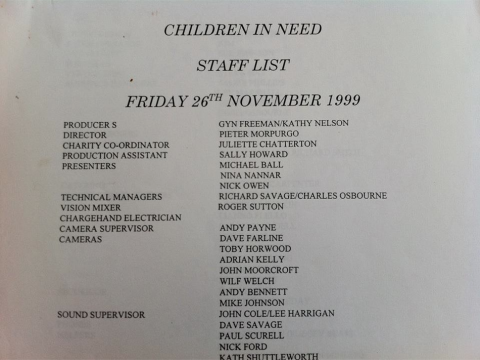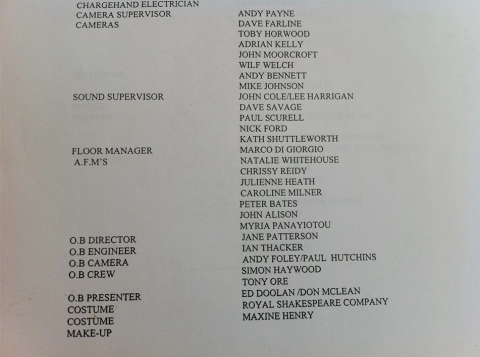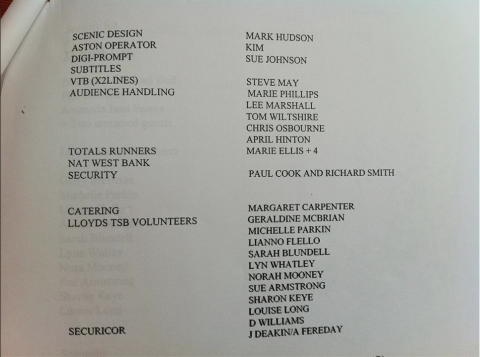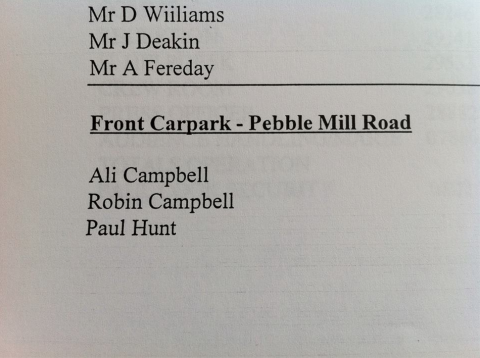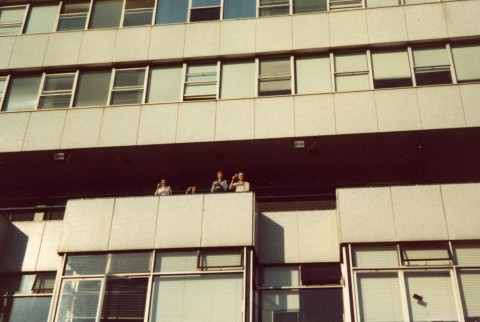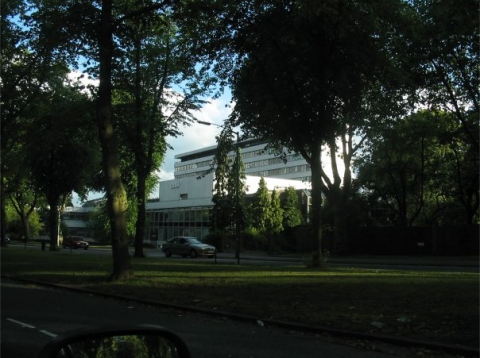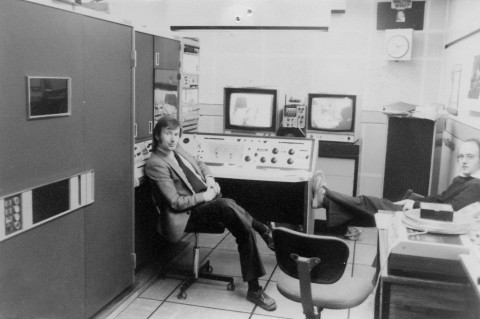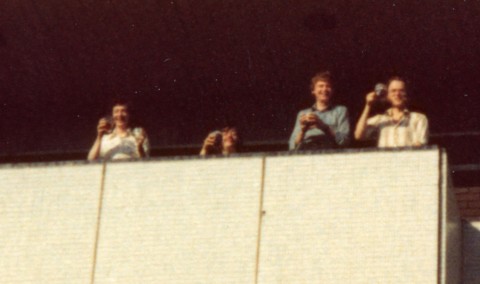Copyright resides with the original holder.
The document is a staff list from the 1999 regional opt team for the Children in Need evening show.
Note that the presenters included Michael Ball, alongside Midlands Today presenters: Nick Owen and Nina Nannar.
Thanks to Harvey Pope for making the list available.
The following comments were left on the Pebble Mill Facebook Group:
Matthew Sly: ‘I was Pudsey Bear that year, we did the majority of it from Nat West in the Town Centre.
I was approached to be Pudsey when I worked in the Post room, and obviously was honoured, I remember that night very well indeed.
I remember how torturous the suit was, it had a fan in the head, but you couldn’t use it. I remember meeting a lot of Children while they were Auditioning for a Martine McCutcheon Video and almost passing out near the end.
I also remember H, Pete, Matt Wall and Matt Evans laughing their heads off when I first put the thing on:)’
Marie Phillips: ‘Matthew – whilst I was Co-ordinator we had strictest instructions that the suit should not be worn for more than twenty minutes at a time – a ten minute break with the head off and so on. You were lucky you didn’t suffer any ill effects. My long serving Pudsey was Charlotte Mayberry (spelling?) who did a brilliant job.’
Matthew Sly: ‘Very true Marie, I was also given the same instructions I must admit, I think I was just a bit of a wimp, the ladies that looked after me were absolutely lovely, to my shame I can’t remember their names anymore.
They also sent me a lovely letter after the night and I’ve also lost that, such a shame, it would have been my pride and joy.’
David Ackrill: ‘A friend of mine (Giles Herbert) who was an Engineer at Pebble Mill helped to organize the CiN special event station using the BBC Amateur Radio Club station located in the Pebble Mill building one year and I have a “QSL” card for a CW (Morse code) contact with the station on 144MHz somewhere in my files.’
